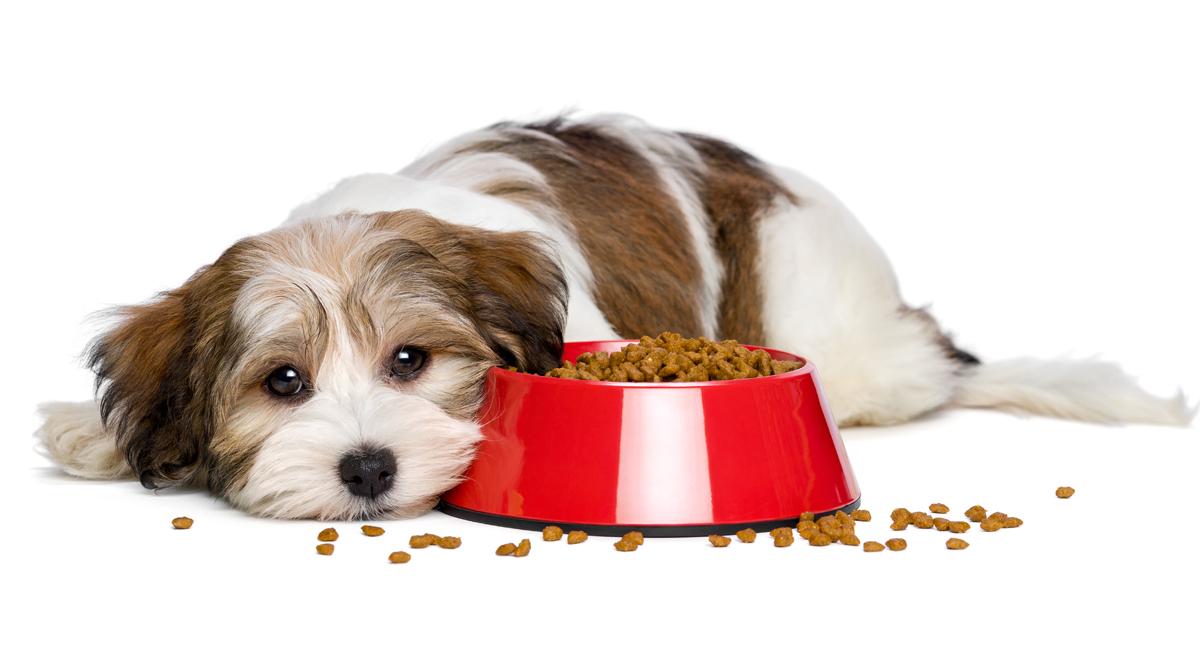
1. Dog & Digestion:
The most important thing to keep in mind when choosing food for your dog is that their digestive system is very different from our own. Unlike us, dogs are meant to swallow in large chunks. The chunks of meat and fat travel through the esophagus and into the stomach where these large pieces breakdown. The food then passes through the small intestines in liquid form. This is where the main part of the digestion process takes place as the nutrients are absorbed. What is not absorbed gets passed through large intestine and eliminated.
2. Things to Avoid:
Unidentified meat– If you see any of the following listed under ingredients, do not buy that dog food: meat meal, meat byproducts, meat & bone meal, animal fat, or animal byproduct meal. This gives no indication of what kind of meats are being used or where they are coming from. These meats could include spoiled grocery store meats, dead zoo animals, roadkill, or euthanized cats and dogs.
Excessive fat– Excessive fat is a sign that your dog’s food may have come from fatty trimmings or slaughter house wastes. To determine the amount of fat found in your dog’s food, divide the amount of fat by the amount of protein. Most dog foods fall between 50-70%. If it is 80% or higher, switch to a different dog food.
Chemical Additives– Additives are used to help preserve dog food. However, some of these additives can be dangerous to our dogs in the long run. Avoiding the following additives could increase your dog’s longevity: Proplene glycol, Ethoxyquin, BHA, BHT, TBHQ, and Propyl gallate.
3. What About Grains?:
Grains can be challenging for dogs to digest, but not impossible. Dogs are carnivores and have a difficult time digesting grains unless they are already partially digested. This is due to the fact that their digestive system is the shortest of any mammal. The digestive system does not have an ample amount of time to digest them appropriately. Dogs are also lacking the enzyme, amylase, in their saliva, which helps to breakdown starchy carbs. A diet high in meat, protein, and fat and low in carbs is more friendly to our dogs’ digestive systems.
4. Types of Dog Food- Kibble, Raw, or Freeze dried:
Kibble– The typical dry dog food or kibble undergoes a baking process. The ingredients are mixed together to create a dough and then cooked using pressurized steam or hot water. The kibble is then dried and a coat of fats, oils, minerals, and vitamins are sprayed over them.
Raw Food– Raw dog food can be purchased fresh or frozen or it can be made at home using meats and vegetables and supplementing with the necessary vitamins and minerals. Some people believe that a raw food diet is a more “natural” diet for dogs because it is similar to how wild canines would eat. Some people argue that domestic dogs have changed over time through breeding and should be fed accordingly.
Freeze Dried– Freeze Dried Dog Food is raw food in which the moisture is eliminated through a process called sublimation. Sublimation takes the frozen raw food and converts the ice directly into water vapor, skipping the liquid phase. It is essentially raw food without water and can be stored at room temperature away from moisture.
5. Food sensitivities:
When a dog has itchy skin, it is commonly linked to a sensitivity. The following foods are the most common culprits: chicken, beef, lamb, corn, soy, wheat, egg, and dairy. Knowing what your dog is sensitive to can help in choosing the best food. If you are unsure, you can completely avoid giving your dog food with any of these ingredients, or by having your dog’s hair & saliva analyzed, we can find which sensitivities resonate with him/her. Dogs with skin issues should also be consuming foods that included vitamins and fatty acids.
